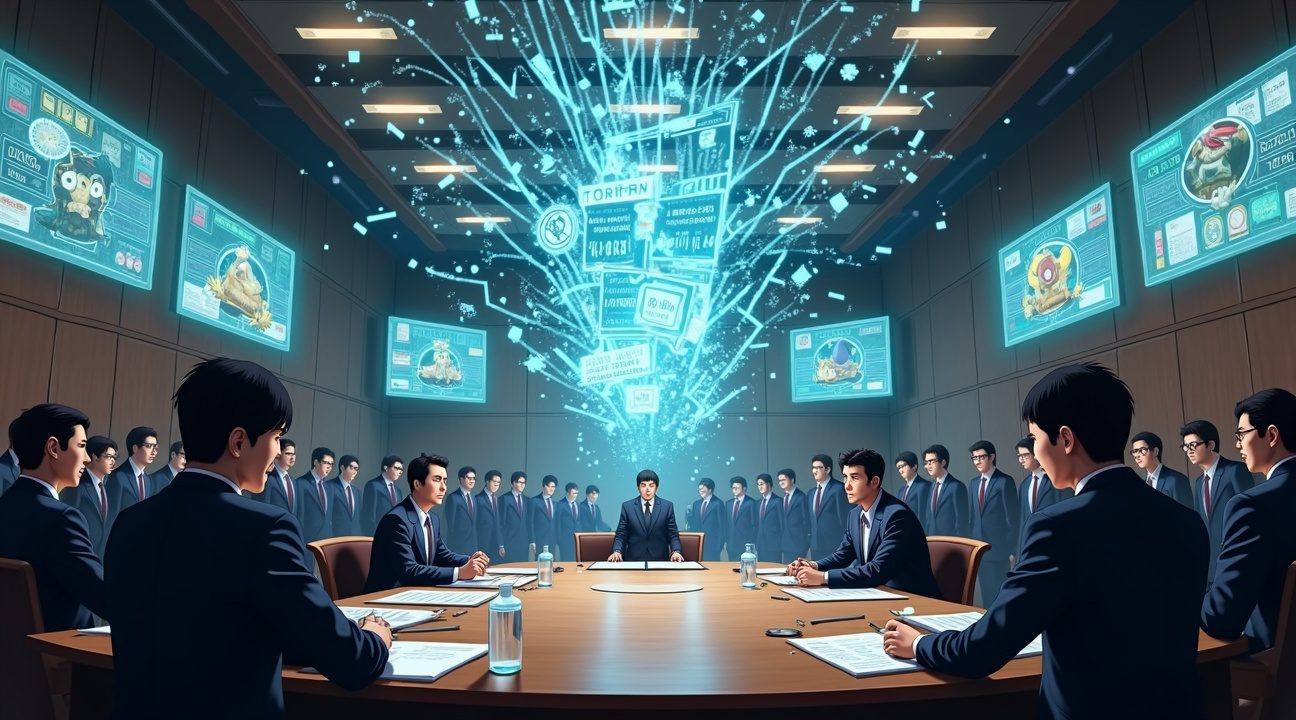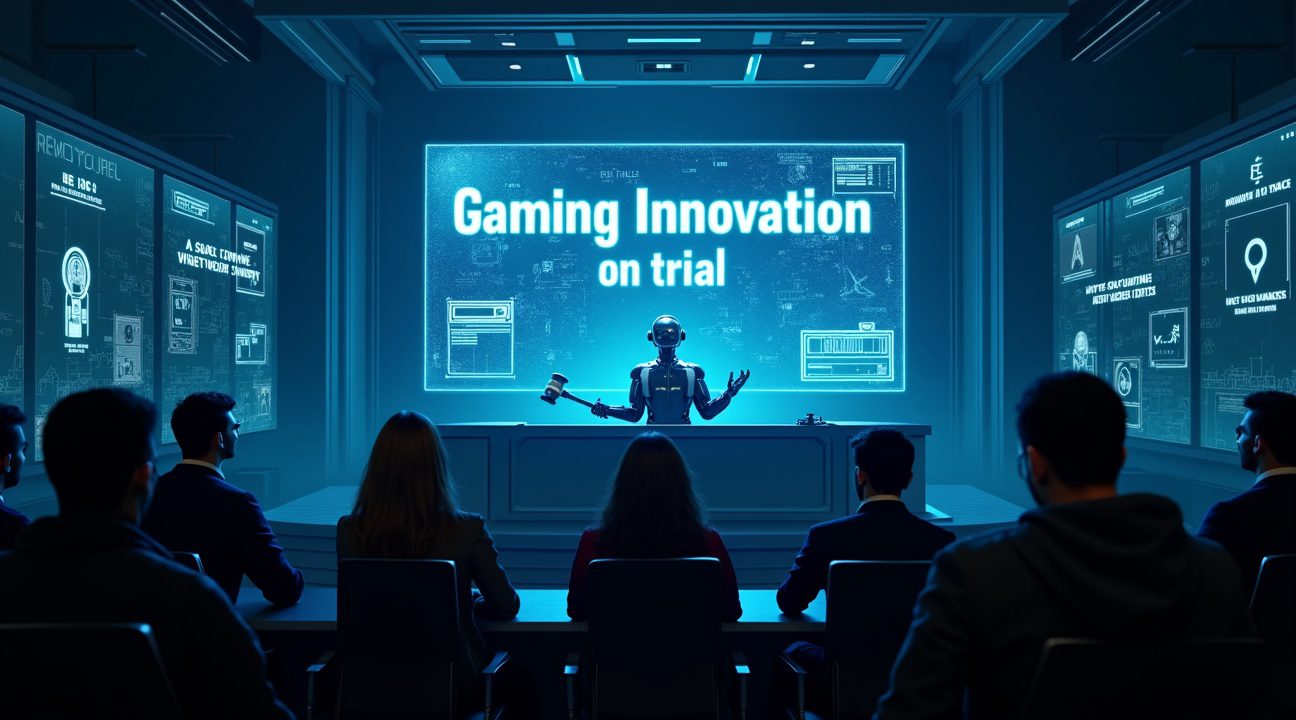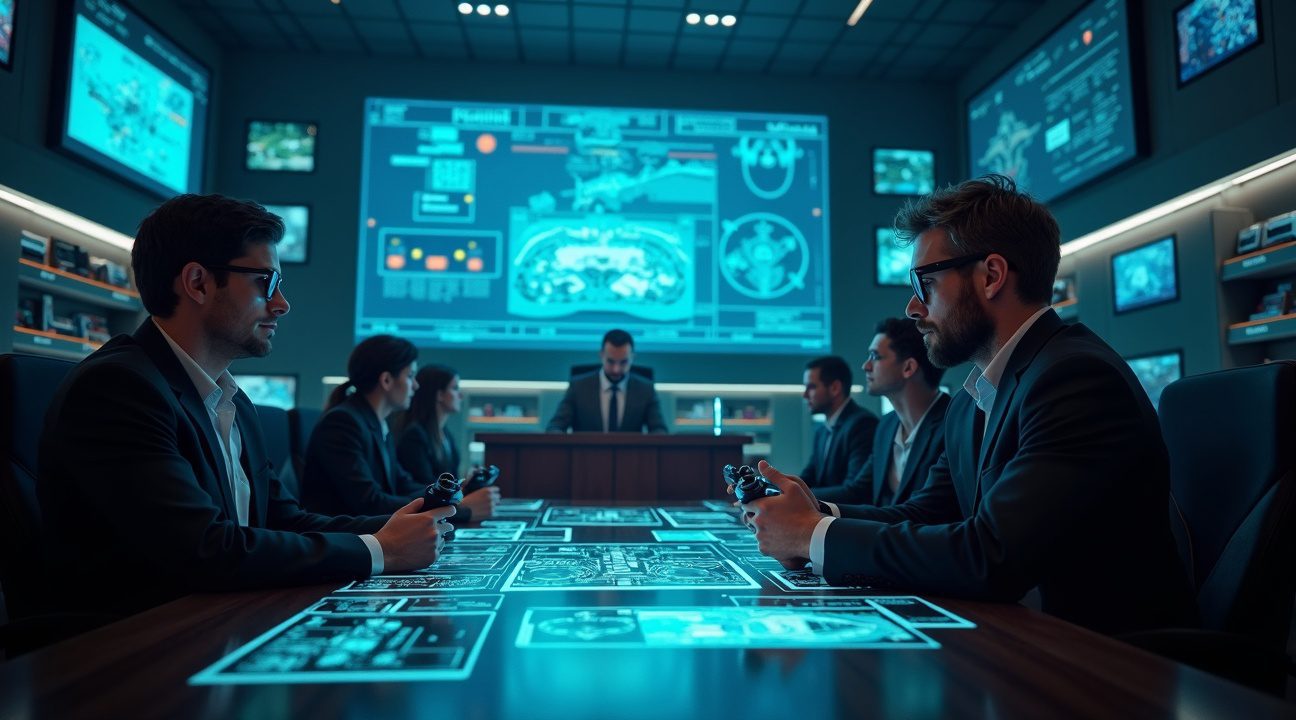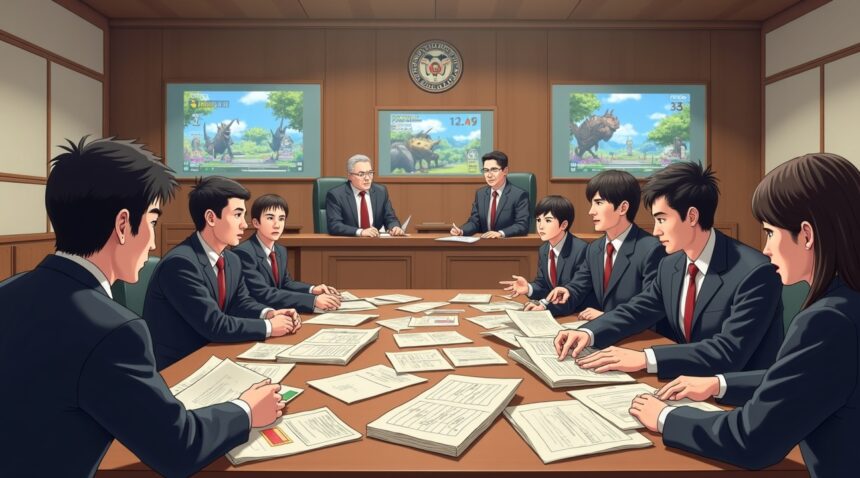Nintendo recently faced a significant legal setback when the Japanese Patent Office rejected its application for patenting creature capture mechanics, a decision that may reshape the gaming industry’s approach to intellectual property.
Patent Rejection and Its Basis
The denied patent application by Nintendo—JP 2024-031879—sought to claim ownership over the mechanics of aiming and throwing items to capture or battle creatures, a core gameplay feature widely recognized in Pokémon Legends: Arceus. However, officials from the Japanese Patent Office ruled that the mechanics did not demonstrate an “inventive step,” meaning they could have been developed using ordinary gaming knowledge.
Extensive Prior Art Cited
To justify the rejection, the Patent Office reviewed prior gaming titles, including ARK: Survival Evolved, Monster Hunter 4, and even Nintendo’s earlier success, Pokémon Go. These games incorporated similar throwing and capture mechanics well before Nintendo’s filing date in December 2021, undermining the novelty of the proposed patent.
Key Takeaways
- The Japanese Patent Office rejected Nintendo’s patent application (JP 2024-031879) due to a lack of innovation and expansive prior art.
- Games like Pokémon Go, Monster Hunter 4, and ARK: Survival Evolved already demonstrated similar mechanics pre-dating Nintendo’s filing.
- The ruling strengthens Pocketpair’s legal defense in its Palworld lawsuit, challenging Nintendo’s overarching patent strategy.
- Nintendo retains appeal options such as filing amendments, going to court, or submitting continuation applications.
- The outcome protects other developers from broad patents on established gameplay systems, ensuring wider creative freedom.
Industry Implications and Future Outlook
This decision strengthens Pocketpair’s standing in the legal dispute with Nintendo over the game Palworld. Patent attorneys believe this damages the credibility of Nintendo’s broader patent claims, possibly affecting related applications within the same patent family.
Despite the setback, Nintendo still has the opportunity to challenge the ruling through legal means. By appealing with amendments or pursuing court actions, they may join the 30% of applicants who eventually succeed in overturning an initial rejection.
Wider Impact on Game Development
More broadly, the ruling sends a strong message to the game development community: basic gameplay elements—like targeting systems and capture mechanics—are widely recognized as common knowledge and are not subject to patent protection. This precedents shields developers from litigation based on foundational mechanics that have become standard in modern game design.
As a result, game studios can now innovate with the confidence that core systems such as throwing mechanics won’t expose them to unnecessary legal risk. This protection fosters a more open creative environment throughout the gaming ecosystem.
Japanese Patent Office Delivers Blow to Nintendo’s Monster Capture Claims
The Japanese Patent Office (JPO) delivered a significant setback to Nintendo’s intellectual property strategy by rejecting patent application JP 2024-031879. This application attempted to secure exclusive rights to creature capture mechanics that Nintendo popularized in Pokémon Legends: Arceus, specifically the ability to aim and throw items to capture or battle creatures.
Patent Rejection Based on Lack of Innovation
The JPO’s ruling centered on a critical finding: Nintendo’s claimed mechanics lacked an “inventive step.” Patent examiners determined that similar gameplay systems already existed across multiple gaming platforms before Nintendo’s application. The rejection notice stated that the patented mechanics “could have easily been made by persons who have common knowledge in the technical field to which the claimed invention(s) pertains.”
This ruling effectively means that Nintendo can’t claim ownership over fundamental gaming mechanics that have become industry standards. This decision reflects broader patent office trends that favor innovation over attempts to retroactively claim existing concepts.
Prior Art Undermines Nintendo’s Claims
The JPO identified several games that predated Nintendo’s patent application and featured similar creature capture mechanics:
- ARK: Survival Evolved demonstrated throwing mechanics for creature interaction
- Monster Hunter 4 included projectile-based creature engagement systems
- Pocketpair’s Craftopia featured capture mechanics using thrown items
- Kantai Collection incorporated similar targeting and throwing gameplay
- Pokémon Go established mobile creature capture through throwing motions
These examples created substantial prior art that undermined Nintendo’s position. Patent law requires genuine innovation rather than simply documenting existing practices, and the JPO found Nintendo’s application failed this standard.
The rejection carries broader implications for gaming patents and could influence Nintendo’s ongoing legal strategy. Given that Nintendo has previously pursued aggressive patent enforcement, this setback might affect how the company approaches future intellectual property claims.
This decision also provides relief to developers who use similar mechanics in their games. The JPO’s ruling suggests that basic gameplay concepts remain available for industry-wide use rather than becoming exclusive to single companies. Such precedents help maintain innovation across the gaming industry by preventing the monopolization of fundamental mechanics that enhance player experiences.
How Prior Art Demolished Nintendo’s Patent Claims
The Japan Patent Office’s rejection of Nintendo’s patent application came down to one fundamental issue: the company couldn’t prove their “monster capture” mechanics were genuinely new. When the JPO examined the application, they discovered that third-party submissions had provided extensive evidence of prior art that predated Nintendo’s December 2021 filing date.
The Critical Evidence That Sunk Nintendo’s Case
Prior art represents any evidence that an invention was already known before a patent application’s filing date. I find it particularly striking that the submitted evidence didn’t just include games from other developers—it also featured Nintendo’s own Pokémon Go. This self-defeating evidence essentially showed that Nintendo had been using these same mechanics in their own games well before attempting to patent them.
The submission demonstrated that aiming and throwing projectiles to capture creatures wasn’t a novel concept Nintendo had invented. Multiple video games had already implemented these core mechanics across various platforms and genres. This established pattern of similar functionality across the gaming industry made it impossible for Nintendo to claim ownership of such broad gameplay concepts.
Why Existing Games Invalidated the Patent Claims
Patent law requires inventions to be both new and non-obvious to someone skilled in the relevant field. The referenced games provided clear evidence that creature capture mechanics using projectile throwing had become standard gameplay elements long before Nintendo’s filing. These existing implementations showed that any skilled game developer would consider such mechanics obvious extensions of established gaming conventions.
The JPO’s decision reflects how patent offices evaluate obviousness in creative industries. When multiple games already feature similar mechanics, it becomes nearly impossible to argue that combining or refining these elements constitutes a patentable invention. Nintendo’s attempt to patent basic monster-catching gameplay fell apart because the gaming industry had already explored these concepts extensively.
This rejection also highlights the importance of thorough prior art searches before filing patent applications. Had Nintendo conducted a comprehensive review, they might have recognized that their own games, including Pokémon Go, would undermine their patent claims. The company’s aggressive legal approach in other cases contrasts sharply with this failed attempt to secure broad gameplay patents.
The gaming community’s response to this rejection has been largely positive, as many developers and players worried about the potential impact of granting such broad patents. If Nintendo had succeeded, it could have created significant barriers for indie developers and smaller studios trying to create games with similar mechanics.
Legal experts note that this case demonstrates the challenges of patenting gameplay mechanics in an industry where innovation often builds upon existing concepts. The collaborative and iterative nature of game development makes it difficult to isolate truly novel mechanics that warrant patent protection.
The prior art submissions effectively showed that Nintendo was attempting to claim ownership of mechanics that had evolved organically across the gaming industry. This collective development pattern made it impossible to attribute these innovations to any single company or inventor.
Moving forward, this rejection may influence how other gaming companies approach patent applications for gameplay mechanics. The decision suggests that patent offices will scrutinize gaming patents more carefully, particularly when they involve fundamental gameplay concepts that have appeared across multiple titles.
The Nintendo case also demonstrates how patent disputes in gaming can have far-reaching implications for the entire industry. While Nintendo continues to protect its intellectual property through other means, this rejection shows that even major gaming companies can’t simply patent basic gameplay mechanics that have become industry standards.
Connection to Nintendo’s Ongoing Palworld Legal Battle
The rejected patent application sits at the center of a complex web of intellectual property claims that Nintendo has constructed around monster-capturing mechanics. This particular application isn’t the smoking gun Nintendo is firing directly at Pocketpair, but it forms a crucial piece of the patent family that underpins the entire legal assault against Palworld.
The Patent Family Structure
Nintendo’s strategy relies on a carefully constructed family of related patents, with the rejected application serving as both sibling to JP7493117 and parent to JP7545191. These interconnected patents create what Nintendo hopes is an impenetrable barrier around core gameplay mechanics that define monster-capture games. The rejected application’s failure threatens this strategic foundation, particularly since patent families often share similar claims and face identical prior art challenges.
Implications for Pocketpair’s Defense
The Japan Patent Office’s reasoning for rejection hands Pocketpair a powerful weapon in their defense arsenal. Patent validity challenges become significantly stronger when examining bodies have already identified fundamental flaws in related applications. The prior art evidence that convinced the JPO to reject this application could prove equally damaging to the patents Nintendo is actively asserting in court.
Pocketpair’s legal team can now point to the JPO’s decision as evidence that Nintendo’s broader patent claims may lack the novelty and inventiveness required for valid patents. Courts often consider patent office rejections when evaluating the strength of related patents, especially when the rejected application shares similar technical disclosures and claims.
The rejection creates a domino effect that could undermine Nintendo’s entire legal position. If the JPO’s logic applies consistently across the patent family, the core patents in Nintendo’s lawsuit strategy face serious validity questions. Patent families typically rise or fall together when prior art challenges surface, and this rejection suggests Nintendo’s monster-capture monopoly may not be as secure as previously believed.
This development mirrors Nintendo’s aggressive approach in other high-profile cases, where the company has pursued multiple patent angles to protect its gaming innovations. However, unlike previous victories where Nintendo’s patents withstood scrutiny, the Palworld case reveals potential cracks in their intellectual property fortress that Pocketpair can exploit to mount an effective defense.

Nintendo’s Legal Options Following the Rejection
The Patent Office’s rejection doesn’t mark the end of Nintendo’s patent pursuit. This “non-final” rejection provides the gaming giant with several strategic pathways to continue fighting for their intellectual property claims against Palworld.
Nintendo’s immediate option involves amending their patent application to address the examiner’s concerns. The company can modify the technical claims, narrow their scope, or provide additional evidence to demonstrate the invention’s uniqueness. Patent attorneys typically recommend this approach as the most cost-effective method to overcome initial rejections.
If amendments prove insufficient, Nintendo can escalate the matter to Japan’s Intellectual Property High Court (IPHC). This specialized tribunal handles complex IP disputes and possesses deep expertise in patent law nuances. The IPHC operates independently from the Patent Office and often provides fresh perspectives on contested applications.
Strategic Considerations for Nintendo’s Next Move
Nintendo faces several tactical decisions that will shape their patent strategy. The company can present new arguments highlighting inventive differences between their technology and existing prior art. Patent prosecutors often discover stronger technical angles during the appeal process that weren’t apparent in initial filings.
Japanese patent prosecution typically extends over multiple years, creating both opportunities and challenges for Nintendo. This extended timeline allows for thorough legal preparation but also delays potential enforcement actions. The company must weigh immediate business interests against long-term intellectual property protection goals.
Nintendo’s legal team might also consider filing continuation applications to pursue different claim strategies simultaneously. This approach provides multiple chances to secure patent protection while maintaining flexibility in their legal arguments.
The gaming company’s recent patent enforcement actions demonstrate their commitment to protecting intellectual property through various legal channels. Their aggressive stance suggests they’ll likely pursue all available options rather than abandoning their Palworld-related patent claims.
Patent outcomes at the JPO frequently undergo revisions through the appeals process. Statistics show that approximately 30% of initially rejected applications eventually receive approval after amendments or appeals. Nintendo’s experienced legal team understands these dynamics and likely anticipated potential setbacks during initial prosecution.
The company could also explore alternative protection strategies while pursuing their patent appeals. Trade secret protection, copyright claims, or design patents might provide complementary intellectual property coverage for specific game mechanics or visual elements.
Nintendo’s decision timeline remains flexible under Japanese patent law. They have several months to respond to the rejection before facing abandonment deadlines. This buffer period allows for careful strategic planning and thorough legal analysis of their strongest arguments.
The rejection’s technical grounds will heavily influence Nintendo’s response strategy. If the examiner cited specific prior art references, Nintendo’s attorneys can develop targeted arguments distinguishing their invention from existing technology. Patent prosecution success often hinges on these technical distinctions rather than broad legal theories.
Nintendo’s broader intellectual property portfolio provides additional context for their Palworld patent strategy. The company maintains thousands of active patents across gaming technology, suggesting they view patent protection as essential to their competitive position. This extensive portfolio indicates they’ll likely invest significant resources in overcoming the current rejection.
The recent settlement patterns in Nintendo’s legal disputes show they prefer definitive outcomes over prolonged uncertainty. This preference might influence whether they pursue extensive appeals or focus on alternative enforcement mechanisms for protecting their gaming innovations against Palworld’s developers.
Time constraints also factor into Nintendo’s strategic calculations. Patent applications must demonstrate novelty at their filing date, so delays in prosecution don’t typically strengthen their legal position. However, successful patent grants provide retroactive protection from the original filing date, making persistence potentially valuable for future enforcement actions.
Broader Industry Implications of Overbroad Gaming Patents
Nintendo’s rejected patent applications could have created a chilling effect across the entire gaming industry if approved. The vague nature of terms like “monster capture,” “aiming,” and “item throwing” would have potentially affected thousands of existing games and countless future projects. When patent claims are written so broadly that they encompass fundamental gameplay mechanics, developers face the risk of inadvertent infringement simply by creating standard video game features.
The Ripple Effect on Game Development
Developers across the industry have expressed concern about how overbroad patents could fundamentally alter the creative process. Small indie studios, in particular, would struggle to navigate potential patent minefields when every basic mechanic could trigger legal action. The financial burden of patent litigation often exceeds what smaller developers can handle, potentially forcing them to avoid entire categories of gameplay mechanics or abandon projects altogether.
Major publishers also recognize the dangers these broad claims present. Nintendo’s previous legal actions have demonstrated the company’s willingness to pursue aggressive litigation strategies. If patents covering such basic mechanics were granted, it could create an environment where innovation becomes secondary to patent avoidance.
Patent Office Protection of Innovation
The rejection of Nintendo’s applications showcases how patent offices can serve as guardians of industry innovation. Legal commentators have praised this decision as recognition that certain gameplay mechanics have become so fundamental that they shouldn’t be subject to patent protection. The patent system was designed to encourage innovation, not to allow companies to claim ownership over basic interactive elements that form the foundation of game design.
Software patents in gaming present unique challenges because gameplay mechanics often build upon decades of established conventions. Unlike hardware innovations, which typically involve concrete technical improvements, software patents can sometimes capture abstract concepts that multiple developers might independently create. Patent offices must carefully evaluate whether claimed innovations truly represent novel contributions or merely describe common practices in digital form.
This rejection sends a clear message that patent examiners understand the gaming industry’s collaborative nature, where mechanics evolve through shared knowledge and iterative improvement. The decision protects not only current developers but also future creators who might otherwise face barriers to innovation. Nintendo’s settlement patterns in other cases have shown how legal pressure can shape industry behavior, making this patent rejection particularly significant for maintaining creative freedom.
The gaming industry thrives on building upon established foundations while adding unique twists and improvements. Allowing companies to patent fundamental mechanics like throwing objects or capturing creatures would essentially grant monopolies over basic interactive concepts that predate most modern games. The patent office’s decision recognizes that these mechanics have become part of the shared vocabulary of game design, similar to how basic literary techniques remain available to all writers.

What This Means for Game Developers and Patent Law
The rejection of Nintendo’s patent application sends ripples through the gaming industry, establishing important precedents for how patent offices evaluate interactive entertainment mechanics. Patent examiners demonstrated they won’t automatically approve gaming-related patents without conducting comprehensive prior art searches, even when submitted by industry giants.
This decision empowers smaller game developers who previously worried about potential legal challenges from major publishers. Independent studios can now approach their projects with greater confidence, knowing that fundamental gameplay mechanics remain accessible to everyone. The ruling suggests that patent offices recognize the difference between genuine innovation and attempts to claim ownership over basic design elements that have existed in various forms across gaming history.
Broader Implications for Patent Strategy
The case illustrates the growing tension between protecting legitimate innovation and preventing the monopolization of common game design concepts. Patent law traditionally aims to reward inventors while ensuring public access to foundational ideas, and this rejection reinforces that balance. Companies can no longer assume they’ll receive patents simply because they file applications for popular mechanics, particularly when those mechanics have clear predecessors in existing games.
This development will likely influence how gaming companies structure their patent portfolios moving forward. Legal teams may need to focus on truly novel technical implementations rather than broad gameplay concepts. The precedent suggests that successful gaming patents will require demonstrable technical innovation beyond standard mechanical interactions that players expect across multiple titles.
The rejection also highlights how Nintendo’s legal strategies sometimes face unexpected challenges, even in their home jurisdiction. Patent offices appear increasingly sophisticated in their understanding of gaming history and mechanics, making it harder for companies to secure overly broad protections.
For the broader gaming ecosystem, this ruling helps preserve creative freedom for developers who build upon established gameplay foundations. Innovation in gaming often comes from combining existing mechanics in new ways or refining established concepts, and overly restrictive patents could stifle this creative process. The rejection supports the principle that players benefit when developers can freely iterate on proven design patterns.
The decision may also influence international patent strategies, as other patent offices often reference Japanese rulings when evaluating similar applications. Gaming companies operating globally will need to reassess their intellectual property approaches, particularly when filing patents that claim broad gameplay mechanics rather than specific technical implementations.
This precedent could encourage more thorough patent challenges in the gaming space. Developers and legal experts now have evidence that patent offices will scrutinize gaming applications carefully, potentially leading to more rejections of questionable claims. The recent settlement patterns in gaming litigation suggest companies are becoming more strategic about which battles they choose to fight.
Patent attorneys working in gaming will need to adjust their strategies accordingly. Future applications will require more detailed technical specifications and clearer distinctions from existing prior art. Simply describing popular gameplay mechanics with technical language won’t suffice if those mechanics have clear predecessors in gaming history.
The rejection ultimately supports healthy competition in the gaming market by preventing the creation of artificial barriers around common design elements. Developers can continue building upon the rich history of gaming mechanics without fear that basic interactions will suddenly become proprietary. This environment encourages innovation through iteration and combination rather than legal maneuvering.
For patent law more broadly, the case demonstrates how specialized knowledge becomes crucial when evaluating applications in technical fields. Patent examiners increasingly need deep understanding of gaming history and mechanics to make informed decisions about what constitutes genuine innovation versus common practice.

Sources:
PC Gamer – Japanese patent officials reject one of Nintendo’s Pokémon patent applications for being too similar to ARK, Monster Hunter, and, embarrassingly, Pokémon GO
GamesFray – Japan Patent Office rejects Nintendo application relevant to Palworld dispute, cites games like ARK as prior art after third-party submission
NeoGAF – Palworld lawsuit patent details as vague as “Press A to jump”: Nintendo has lost their minds


